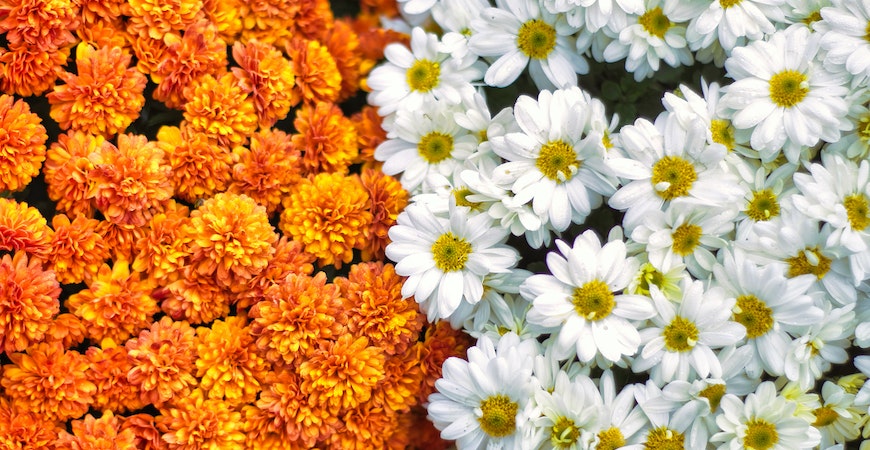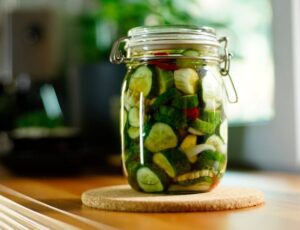
Companion Planting: A How To Guide
Peanut butter and jelly. Abbott and Costello. Rock and roll. The list of great pairings goes on and on, but it will never be complete until you include some of our companion plants in your gardening process.
What are companion plants? They’re groups of different plants that, when grown next to each other, provide benefits to their garden pal. Knowing which plants pair well together can lead to all sorts of benefits. And, just as importantly, understanding which pairs to avoid can help avoid accidental disasters.
So, as you’re prepping your garden for the season, try companion planting to reap the most from your seeds.
The Benefits of Companion Planting
Perhaps the best way to examine why you should consider companion planting is to look at a classic example of the practice: The Three Sisters Garden.
The three sisters, in this case, are corn, beans, and squash. Corn grows tall and provides the necessary structure and support for climbing crops like beans and peas.
At the same time, beans return nitrogen to the soil, which benefits the growth of corn and squash. And the squash leaves suppress weeds and give shade to smaller bean plants and other seedlings.
So, when you grow these vegetables together, they each help the other thrive. That means you’ll spend less time and energy trying to coax growth and more time enjoying the literal fruits (and vegetables) of your labor.
Beyond the example laid out above, there are a variety of reasons to consider companion planting:
- Plants with differing root systems can help lessen soil compaction and draw nutrients from deeper in the soil.
- Planting different crops in rows between each other can maximize space in smaller gardens.
- Some companion plants will repel garden pests and attract helpful insects and pollinators.
- Maximizing the use of your garden space can keep the soil moist, prevent erosion, and keep weeds at bay.
- Some plants can help boost the flavor of their companions.
The Ideal Veggies to Pair Together
For an impactful, veggie-heavy garden, consider some of our favorite vegetables to pair together.
Here are our favorite tomato companion plants:
- Asparagus
- Basil
- Carrots
- Celery
- Dill
- Lettuce
- Onions
- Parsley
- Spinach
For other fresh pairs, try these cucumber companion plants:
- Beans
- Cabbage
- Celery
- Corn
- Lettuce
- Peas
- Radishes
Carrots are another popular gardening option. These are some of the best companions to plant alongside these root vegetables:
- Chive
- Rosemary
- Sage
- Tomatoes
For fruit fans, consider growing these plants with your strawberries:
- Bush beans
- Lettuce
- Spinach
These companion plants aren’t chosen just for their good looks and sparkling personality. They provide specific benefits that help their partners thrive.
Take basil, for instance. Basil is not only a natural tomato companion due to their complementary flavor profiles, but the herb also keeps away a wide range of harmful pests: aphids, flies, mosquitoes, and spider mites.
But simply because a companion plant works well with one garden buddy doesn’t mean it will help others. Continuing our use of basil as an example, it may help tomatoes thrive, but it will stunt the growth of cucumbers.
If you’re unsure whether to plant two vegetables near each other, you can always ask the experts at your local gardening center or do a quick search online. However, a general rule of thumb is that if the pair taste good together, they likely benefit from growing near each other.
The Best Flowers for Companion Planting with Vegetables
While it’s always nice to boost veggie production by pairing vegetables together, sometimes you want to add a little variety. Flowers can offer many of the same benefits as edible companion plants while also adding natural beauty to your garden.
Cosmos, for example, aren’t just vibrant. They also attract green lacewings, a beneficial insect that loves to munch on pesky pests like aphids, scale bugs, and thrips.
Marigolds are another popular companion plant to pair with eggplants, potatoes, and squash. The flower will help keep some beetle species and hornworms away.
However, marigolds can also attract aphids. So, in some situations, they can help your garden by planting them further away from vegetables and using them as trap crops.
While many people love the scent of lavender, the same can’t be said of many of our least favorite garden pests. The fragrant flower can repel everything from dear and mice to ticks and moths.
Sunflowers are bold, bright, and beautiful. They can serve as a trellis for climbing plants while inviting beneficial pollinators to your garden.
Yet sunflowers can also attract squirrels. Yet, if you pair it with squash, the coarse, bitter leaves of the vegetable will keep the rodents away.
The Companion Plant Combos to Avoid
Just as important as knowing the right pairs to grow as companion plants is remembering which twosomes to avoid. Part of the reason to avoid some of these combinations is to prevent the spread of disease.
Though potatoes and tomatoes rhyme, they aren’t the best buddies in your garden. Both are affected by the same diseases, and keeping them apart can help prevent their common blights from damaging your entire garden.
Tomatoes and corn also attract some of the same pests. Growing them next to each other is akin to throwing open the proverbial front door to your garden and inviting an invasion of harmful insects.
With that in mind, here’s a list of some plants and veggies to avoid planting near each other:
- Beans: Don’t plant next to garlic and onions.
- Cabbage family (broccoli, cauliflower, and kale): Don’t plant next to dill, fennel, pole beans, strawberries, and tomatoes.
- Cucumbers: Don’t plant next to aromatic herbs and Irish potatoes.
- Onion family: Don’t plant next to beans and English peas.
- Potatoes: Don’t plant next to cantaloupe, cucumbers, eggplant, pumpkin, raspberries, squash, sunflowers, and tomatoes.
- Tomatoes: Don’t plant next to broccoli, cauliflower, fennel, kale, and Irish potatoes.
Companion Planting Benefits You and Your Garden
When you grow companion plants in your garden, you’re helping each member of the pair thrive. This can mean more flavorful veggies, better soil, and fewer harmful pests.
So, let your vegetables, flowers, and other plants enjoy the companionship of their beneficial partners. Then, later, you can reap the benefit of your beautiful, thriving garden!














